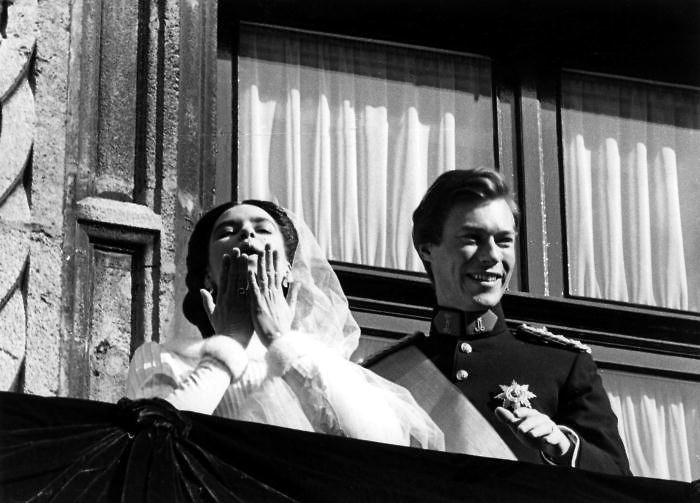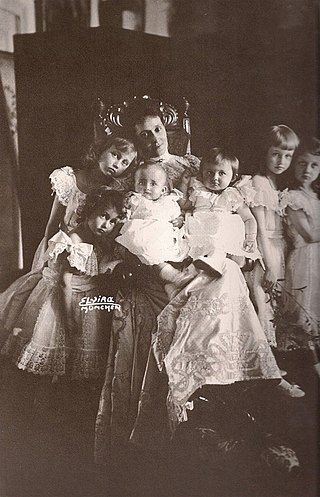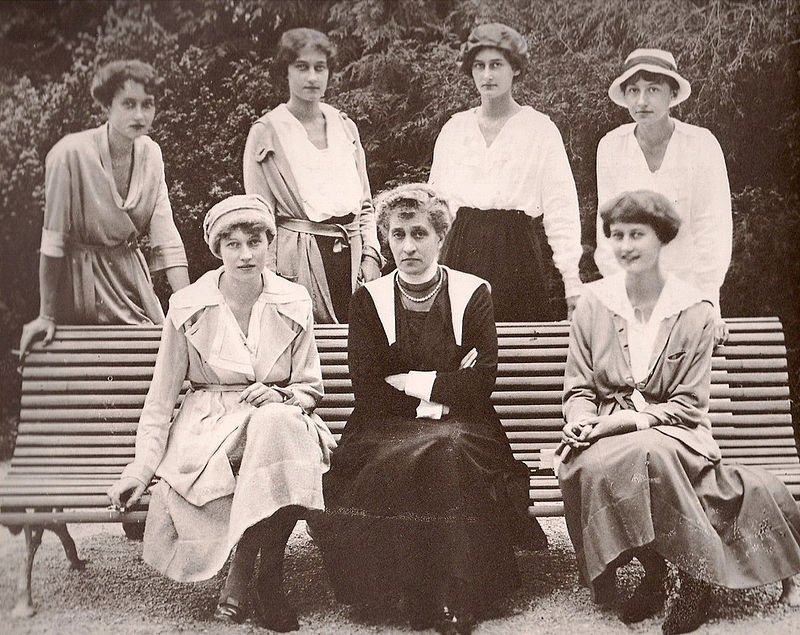by Susan Flantzer
© Unofficial Royalty 2019

Grand Duke Jean of Luxembourg (1921 – 2019)
(All photos credits – Wikipedia unless otherwise noted)
Grand Duke Jean of Luxembourg was born on January 5, 1921, at Berg Castle in Colmar-Berg, Luxembourg. He was the eldest of the six children of Grand Duchess Charlotte of Luxembourg and Prince Félix of Bourbon-Parma. His maternal grandparents were Grand Duke Guillaume IV of Luxembourg and Infanta Maria Ana of Portugal, daughter of the deposed King Miguel I of Portugal. His paternal grandparents were Robert I, Duke of Parma and his second wife, Infanta Maria Antonia of Portugal, also a daughter of the deposed King Miguel I of Portugal. Of the 24 children born from his paternal grandfather’s two marriages, Jean’s aunts and uncles include Empress Zita of Austria, Princess Marie Louise of Bulgaria, and Prince René of Bourbon-Parma, father of Queen Anne of Romania. Jean married Princess Joséphine-Charlotte of Belgium and had three sons and two daughters. In 2000, Grand Duke Jean abdicated in favor of his son Henri. Grand Duke Jean died on April 23, 2019, at the age of 98.
Jean has 11 maternal first cousins, 24 paternal first cousins, and 16 paternal half-first cousins, for a total of 51 first cousins. He shares his first cousins with his siblings Princess Elizabeth of Luxembourg, Duchess of Hohenberg; Princess Marie-Adélaide of Luxembourg, Countess Henckel von Donnersmarck; Princess Marie Gabrielle of Luxembourg, Countess of Holstein-Ledreborg; Prince Charles of Luxembourg, and Princess Alix of Luxembourg, Princess de Ligne. Because Grand Duke Jean has so many cousins, this article is in the form of a list of his cousins with links.
******************
Grand Duke Jean’s Maternal Aunts (no maternal uncles): Children of Grand Duke Guillaume IV of Luxembourg and Infanta Maria Ana of Portugal

Grand Duke Jean’s grandmother Maria Ana of Portugal, Grand Duchess of Luxembourg with her six daughters – Jean’s five aunts and his mother
- Marie-Adélaïde, Grand Duchess of Luxembourg (1894 – 1924), unmarried, abdicated, became a nun
- Princess Hilda of Luxembourg, Princess of Schwarzenberg (1897 – 1979), married Adolf, 10th Prince of Schwarzenberg, no issue
- Princess Antonia of Luxembourg, Crown Princess of Bavaria (1899 – 1954), second wife of Crown Prince Rupprecht of Bavaria, had six children
- Princess Elisabeth of Luxembourg, Princess of Thrun and Taxis (1901 – 1950), married Prince Ludwig Philipp of Thurn and Taxis, had two children
- Princess Sophie of Luxembourg, Princess of Saxony (1902 – 1941), married Prince Ernst Heinrich of Saxony, had three children
******************
Grand Duke Jean’s Half Paternal Aunts and Uncles: Children of Robert I, Duke of Parma and his first wife Princess Maria Pia of Bourbon-Two Sicilies
- Marie Louise of Bourbon-Parma, Princess of Bulgaria (1870 – 1899), married Tsar Ferdinand I of Bulgaria, had two sons and two daughters
- Ferdinando of Bourbon-Parma (born and died 1871), died in infancy
- Luisa Maria of Bourbon-Parma (1872 – 1943), unmarried, mentally disabled
- Enrico, Duke of Parma (1873 – 1939), unmarried, mentally disabled, Titular Duke of Parma 1907-1939, his brother Elias took up the role as regent and head of the family
- Maria Immacolata of Bourbon-Parma (1874 – 1914), unmarried, mentally disabled
- Giuseppe, Duke of Parma (1875 – 1950), unmarried, mentally disabled, Titular Duke of Parma 1939-1950, his brother Elias continued the role as regent and head of the family
- Maria Teresa of Bourbon-Parma (1876 – 1959), unmarried, mentally disabled
- Maria Pia of Bourbon-Parma (1877 – 1915), unmarried, mentally disabled
- Beatrice of Bourbon-Parma (1879 – 1946), married Pietro Lucchesi-Palli, had three sons
- Elias, Duke of Parma (1880- 1959), married Archduchess Maria Anna of Austria, had five daughters and three sons; Head of the Ducal Family of Parma (1950–1959)
- Maria Anastasia of Bourbon-Parma (born and died 1881), died in infancy

Jean’s paternal grandparents, aunts, and uncles: the family of Robert I, Duke of Parma in 1906, From left to right, first row: Immaculata, Antonia, Isabella, Duke Robert, Henrietta, Luigi, Gaetano, Duchess Maria Antonia, Renato, Zita (sitting on the far right). From left to right, second row: Francesca, Pia, Luisa, Adelaide, Teresa, Joseph, Xavier, Henry, Sixtus, Felix
Grand Duke Jean’s Full Paternal Aunts and Uncles: Children of Duke of Parma, Robert I, Duke of Parma and his second wife Infanta Maria Antonia of Portugal
- Maria della Neve Adelaide of Bourbon-Parma (1885 – 1959), Benedictine nun at the Monastery of Solesmes, France
- Sixtus of Bourbon-Parma (1886 – 1934), married Hedwige de La Rochefoucauld, had one daughter
- Xavier, Duke of Parma (1889 – 1977), married Madeleine de Bourbon-Busset, had four daughters and two sons, the Carlist claimants to the Spanish throne descend through this line
- Francesca of Bourbon-Parma (1890 – 1978), Benedictine nun at the Monastery of Solesmes, France
- Zita of Bourbon-Parma, Empress of Austria (1892 – 1989), married Karl I, Emperor of Austria, had five sons and three daughters
- René of Bourbon-Parma (1894 – 1962), married Princess Margrethe of Denmark, had three sons and one daughter
- Maria Antonia of Bourbon-Parma (1895 – 1937), Benedictine nun at the Monastery of Solesmes, France
- Isabella of Bourbon-Parma (1898 – 1984), a nun
- Luigi of Bourbon-Parma (1899 – 1967), married Princess Maria Francesca of Savoy, had three sons and one daughter
- Henrietta Anna of Bourbon-Parma (1903 – 1987), unmarried, was deaf
- Gaetano of Bourbon-Parma (1905 – 1958), married and divorced Princess Margarete of Thurn and Taxis, had one daughter
******************
MATERNAL FIRST COUSINS
Maternal First Cousins: Children of Princess Antonia of Luxembourg and Crown Prince Rupprecht of Bavaria
- Prince Heinrich of Bavaria (1922 – 1958), married Anne Marie de Lustrac, no children
- Princess Irmingard of Bavaria (1923 – 2010), married her first cousin Prince Ludwig of Bavaria, had one son and two daughters
- Princess Editha of Bavaria (1924 – 2013), married (1) Tito Tommaso Maria Brunetti, had three daughters (2) Professor Gustav Christian Schimert, had three sons
- Princess Hilda of Bavaria (1926 – 2002), married Juan Bradstock Edgar Lockett de Loayza, had three sons and one daughter
- Princess Gabrielle of Bavaria (born 1927), married Karl, 14th Duke of Croÿ, had two sons and one daughter
- Princess Sophie of Bavaria (born 1935), married Prince Jean-Engelbert, 12th Duke of Arenberg, had four sons and one daughter
******************
Maternal First Cousins: Children of Princess Elisabeth of Luxembourg and Prince Ludwig Philipp of Thurn and Taxis
- Prince Anselm of Thurn and Taxis (1924 – 1944), unmarried, killed in World War II
- Princess Iniga of Thurn and Taxis (1925 – 2008), married Prince Eberhard of Urach, had two daughters and three sons
******************
Maternal First Cousins: Children of Princess Sophie of Luxembourg and Prince Ernst Heinrich of Saxony
- Prince Albrecht of Saxony (1922 – 2009), unmarried
- Prince Georg of Saxony (1923 – 1982), married (1) Margit Lukas, had one son and one daughter (2) Charlotte Schwindack, no children, divorced (3) Erina Eilts, no children
- Prince Rupprecht of Saxony (1925 – 2003), unmarried
******************
PATERNAL FIRST COUSINS
Paternal First Cousins: Children of Prince Sixtus of Bourbon-Parma and Princess Hedwige de La Rochefoucauld
- Princess Isabella of Bourbon-Parma (1922–2015), married Roger de la Rochefoucauld, had five sons
******************
Paternal First Cousins: Children of Prince Xavier of Bourbon-Parma, Duke of Parma and Countess Magdalene of Bourbon-Busset

Prince Carlos Hugo of Bourbon-Parma, Duke of Parma, one of Jean’s paternal cousins
- Princess Maria Francisca of Bourbon-Parma (born 1928), married Prince Edouard de Lobkowicz, had three sons and one daughter
- Prince Carlos Hugo of Bourbon-Parma, Duke of Parma (1930 – 2010), married Princess Irene of the Netherlands, had two sons and two daughters, divorced
- Princess Maria Teresa of Bourbon-Parma (born 1933), unmarried
- Princess Cecilie of Bourbon-Parma (born 1935), unmarried
- Princess Maria de las Nieves of Bourbon-Parma (born 1937), unmarried
- Prince Sixtus Henri of Bourbon-Parma (born 1940), unmarried
******************
Paternal First Cousins: Children of Princess Zita of Bourbon-Parma and Karl I, Emperor of Austria

Jean’s paternal first cousins: children of Zita of Bourbon-Parma and Emperor Karl of Austria: left to right – Elisabeth, Charlotte, Rudolf, Karl Ludwig, Felix, Robert, Adelheid, Otto
- Crown Prince Otto (1912 – 2011), married Regina of Saxe-Meiningen, had five daughters and two sons
- Archduchess Adelheid (1914 – 1971), unmarried
- Archduke Robert (1915 – 1996), married Margherita of Savoy-Aosta, had three sons and two daughters including Archduke Lorenz who married Princess Astrid of Belgium, only daughter of King Albert II of the Belgians
- Archduke Felix (1916 – 2011), married Anna-Eugénie of Arenberg, had four daughters and three sons
- Archduke Karl Ludwig (1918 – 2007), married, Yolanda of Ligne, had two sons and two daughters including Archduke Carl Christian who married Princess Marie Astrid of Luxembourg, daughter of Grand Duke Jean of Luxembourg
- Archduke Rudolf (1919 – 2010), married (1) Countess Xenia Tschernyschev-Besobrasoff, had three sons and one daughter; (2) Anna Gabriele of Wrede, had one daughter
- Archduchess Charlotte (1921 – 1989), married George, Duke of Mecklenburg, no children
- Archduchess Elisabeth (1922 – 1993), married Prince Heinrich Karl Vincenz of Liechtenstein, had four sons and one daughter
******************
Paternal First Cousins: Children of Prince René of Bourbon-Parma and Princess Margaret of Denmark

Anne of Bourbon-Parma, one of Jean’s paternal cousins; photo source: Romanian Royal Family Website
- Prince Jacques of Bourbon-Parma (1922 – 1964) married Countess Birgitte Alexandra Maria af Holstein-Ledreborg, had two sons and one daughter
- Princess Anne of Bourbon-Parma (1923 – 2016), married former King Michael I of Romania, had five daughters
- Prince Michel of Bourbon-Parma (1926 – 2018), married (1) Princess Yolande de Broglie-Revel, had three daughters and two sons, divorced (2) Princess Maria Pia of Savoy, no children
- Prince André of Bourbon-Parma (1928 – 2011), married Marina Gacry, had two daughters and one son
******************
Paternal First Cousins: Children of Prince Luigi of Bourbon-Parma and Princess Maria Francesca of Savoy
- Prince Guido of Bourbon-Parma (1940 – 1991) married Brigitte Peu-Duvallon, had one son, divorced
- Prince Rémy of Bourbon-Parma (born 1942), married (1) Laurence Dufresne d’Arganchy, had one son and one daughter, divorced; (2) Elisabeth Tardif, no children
- Princess Chantal of Bourbon-Parma (born 1946), married (1) Panayotis Skinas, had one son and one daughter, divorced; (2) Francois-Henri Georges, no children
- Prince Jean of Bourbon-Parma (born 1961), married Virginia Roatta, had two sons
******************
Paternal First Cousins: Children of Prince Gaetano of Bourbon-Parma and Princess Margherita of Thurn and Taxis)
- Princess Diane of Bourbon-Parma (born 1932) married (1) Prince Franz Joseph of Hohenzollern-Sigmaringen, no children, divorced; (2) Hans Joachim Oehmichen, had two sons and one daughter
******************
Paternal Half First Cousins: Children of Princess Marie Louise of Bourbon-Parma and Ferdinand I, Prince of Bulgaria (later Tsar)

Jean’s paternal half-cousins: Eudoxia, Kyril, Boris, and Nadejda of Bulgaria
- Tsar Boris III of Bulgaria (1894 – 1943), married Princess Giovanna of Italy, had one son and one daughter including the former Tsar Simeon II who served as Prime Minister of Bulgaria under the name Simeon Borisov Sakskoburggotski
- Prince Kiril of Bulgaria (1895–1945), unmarried, executed
- Princess Eudoxia of Bulgaria (1898–1985), unmarried
- Princess Nadezhda of Bulgaria (1899–1958), married Duke Albrecht Eugen of Württemberg, had three sons and two daughters
******************
Paternal Half First Cousins: Children of Princess Beatrice of Bourbon-Parma and Count Pietro Lucchesi-Palli
- Count Antonio Lucchesi-Palli (1907 – 1911), died young
- Count Roberto Lucchesi-Palli (1908 – 1983), married Stefania Ruffo di Calabria, had four sons
- Count Adinolfo Lucchesi-Palli (1911 – 1986), married Sarolta Teleki Gräfin von Szek, had three daughters and two sons
- Count Carlo Lucchesi-Palli (1915 – 1919), died young
******************
Paternal Half First Cousins: Children of Prince Elia of Bourbon-Parma, Duke of Parma and Archduchess Maria Anna of Austria
- Princess Elisabetta of Bourbon-Parma (1904 – 1983), unmarried
- Prince Carlo Luigi of Bourbon-Parma (1905 – 1912), died young from polio
- Princess Maria Francesca of Bourbon-Parma (1906 – 1994), unmarried
- Prince Robert Hugo of Bourbon-Parma, Duke of Parma (1909 – 1974), unmarried
- Prince Francesco Alfonso of Bourbon-Parma (1913 – 1939), unmarried
- Princess Giovanna Isabella of Bourbon-Parma (1916 – 1949), unmarried, killed in a shooting accident
- Princess Alicia of Bourbon-Parma (1917 – 2017), married Infante Alfonso, Duke of Calabria, had two daughters and one son
- Princess Maria Cristina of Bourbon-Parma (1925 – 2009), unmarried
******************
This article is the intellectual property of Unofficial Royalty and is NOT TO BE COPIED, EDITED, OR POSTED IN ANY FORM ON ANOTHER WEBSITE under any circumstances. It is permissible to use a link that directs to Unofficial Royalty.
Works Cited
- Lundy, D. (2019). Main Page. [online] Thepeerage.com. Available at: http://www.thepeerage.com/. (for genealogy information)
- Unofficial Royalty. (2019). Unofficial Royalty. [online] Available at: https://www.unofficialroyalty.com. (for biographical and genealogy information)
- Wikipedia. (2019). Main Page. [online] Available at: https://en.wikipedia.org/. (for biographical and genealogy information)

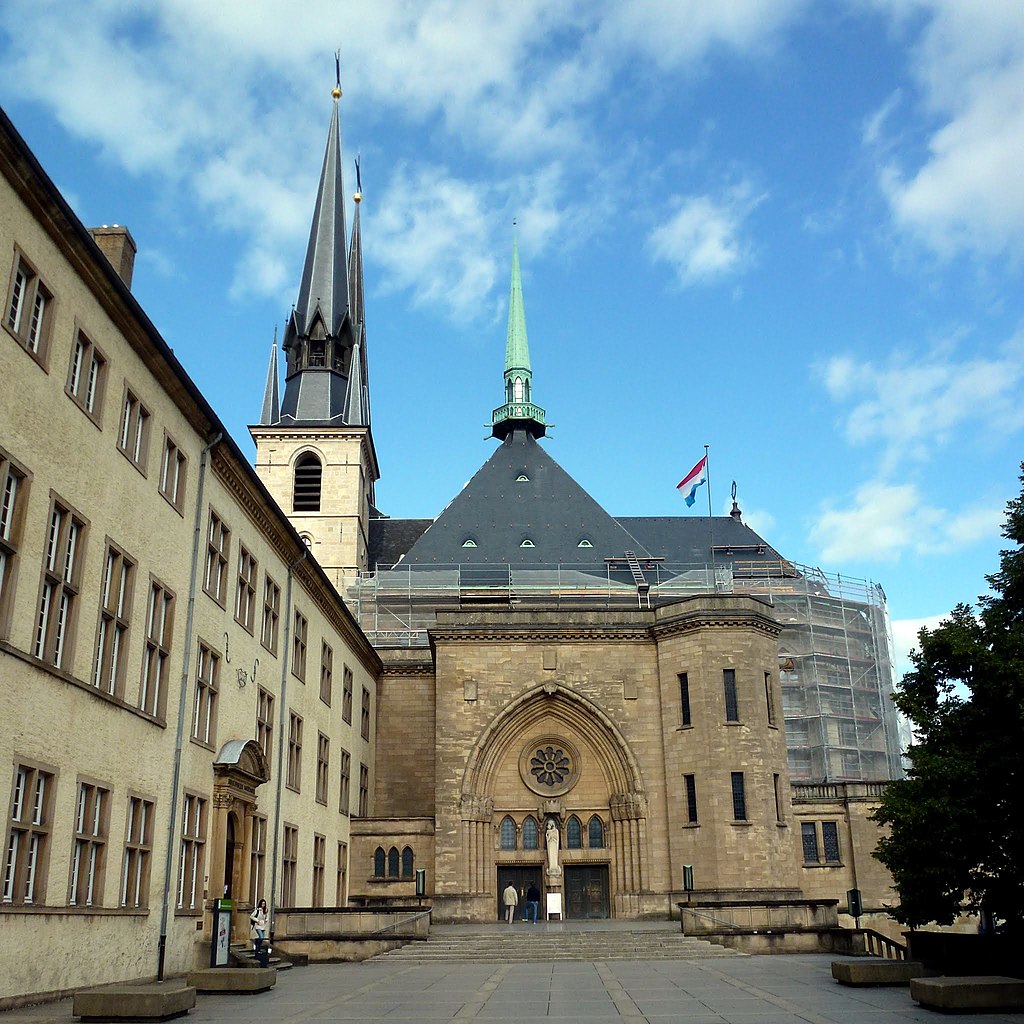
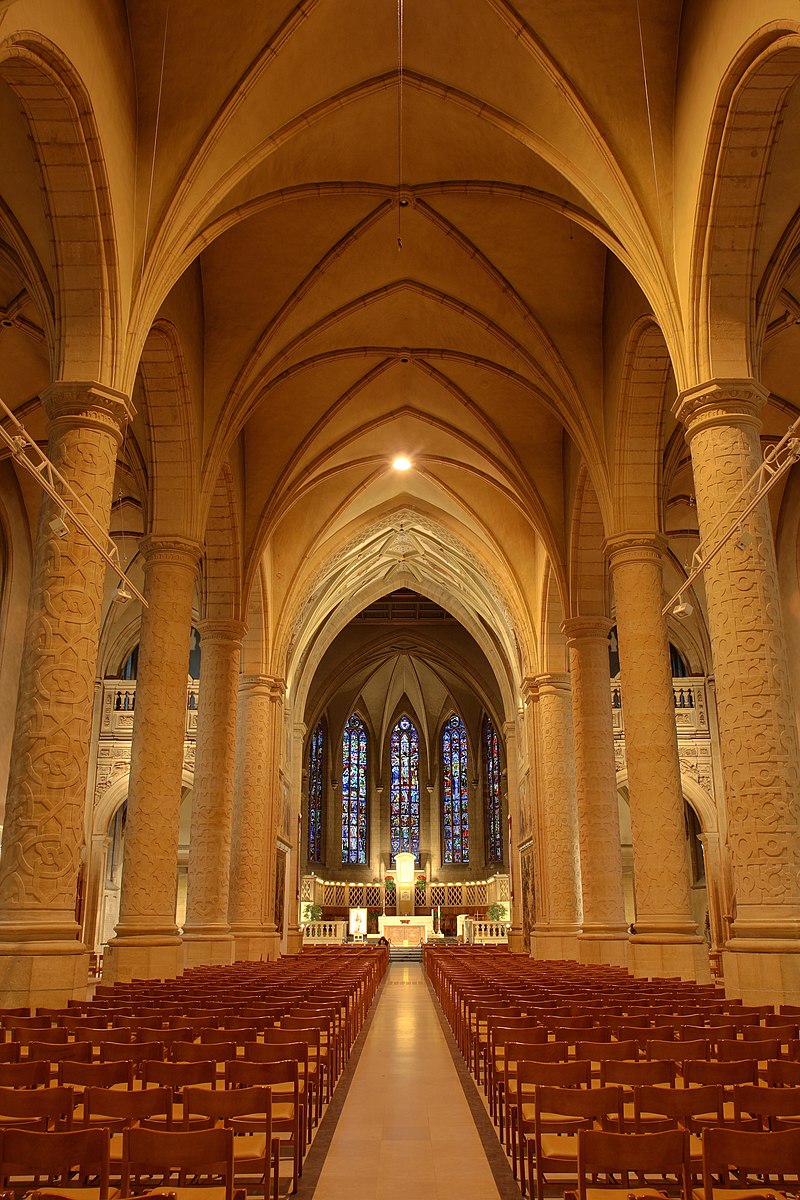









.jpg?resize=538%2C403)
